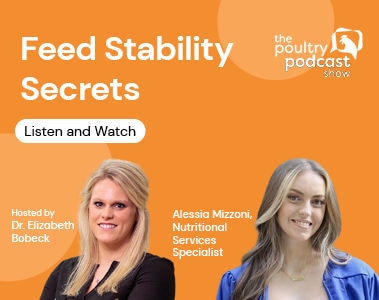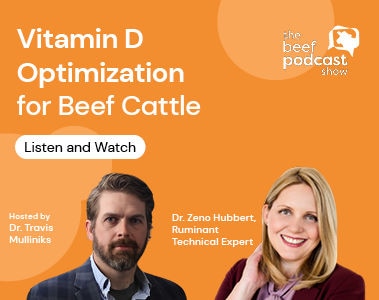
Throughout the dairy production cycle, it is imperative that high forage and water quality are maintained. A multitude of potential challenges can exist when it comes to feed and water quality on farms. Molds and mycotoxins are potential contaminants which can disrupt animal health and performance and are found in a wide variety of feedstuffs. The dry period is a critical time in the dairy cow’s life which has significant implications to the subsequent lactation and also heavily influences the calf. Any contamination of the feed or water supply can have serious consequences on the performance of the herd and its progeny, especially during the dry period and transition to lactation when cows are especially susceptible to such challenges.
Mycotoxins can be produced in the field or in storage. Most mycotoxin contamination comes from the field. Ensiling contaminated crops causes big problems as the presence of the fungi can change the fermentation process. This can result in the pH not dropping as needed to inhibit detrimental bacteria; thus, there is an overgrowth of undesirable bacteria such as Clostridia, Listeria, and Escherichia coli which can further reduce feed quality and cause issues in cattle. The combination of molds, mycotoxins, and pathogenic bacteria can exacerbate the negative effects of the individual contaminants and puts the cow at a greater risk of conditions such as intestinal hemorrhagic syndrome (Schuenemann et al., on-going study).
Mycotoxin contamination can be difficult to identify in dairy cows under field conditions because a variety of the indicators are non-specific and can be attributed to changes often observed during the transition period such as shifts in dry matter intake (DMI).
The presence of mold itself will have a negative impact on the nutritional quality of the forage even if mycotoxins are not present. As the mold grows, the nutrient value of the forage decreases, and palatability can be negatively impacted as well, leading to a decrease in DMI. Mycotoxins can trigger an inflammatory response which can be very disruptive to animal health and performance leading to issues like decreased milk production and poor fertility.
Mycotoxin contamination can have many negative effects in cattle, including the following problems:
Figure 1. Effects of mycotoxins on Cow & Calf Health.
(Source: dsm-firmenich, 2024)
As of June 2024, Schuenemann et al. (on-going study) have gathered data from 71 farms representing nearly 300,000 cows in four different countries (USA, Mexico, Chile and Argentina) over 3 years (2022-2024). Transition total mixed ration (TMR) samples as well as individual feed ingredients were collected and analyzed for mycotoxins via LC-MS/MS method. Twenty-five percent of the samples contained four mycotoxins (DON + ZEN + FUM + T2 Toxin). Within their 2023 data set, the percentage of samples containing four mycotoxins was 75% due to the bad weather during harvest that year. This data aligns with other studies which have reported 57 to 87% of samples were contaminated with two or more mycotoxins (Gruber-Dorninger et al., 2019; Schwandt et al., 2021; Biscotti et al., 2022).
Gestation is controlled by hormones and the immune system, but pro-inflammatory mediators could trigger early parturition. In Holstein cows, assuming cows are pregnant with dairy sires, the typical gestation length ranges from 254 to 298 days (gestation length is bit longer when using beef sires on dairy cows). The average gestation length is 270 – 283 days (~82% of calvings). A short gestation length is considered anywhere between 254 to 269 days (9-12% of calvings) while extended gestation ranges from 284-298 days (6-9% of calvings).
During the last 60 days of gestation, rapid growth occurs and about 50% of calf birth weight accrues during this time. The brain of the calf continues to develop during the last 30 days of gestation including the hypothalamus which is the part of the brain that controls the permeability of the gastrointestinal tract. Although the effect of gestation length on calf brain development is not fully understood, calves born from pregnant cows experiencing short gestations are more susceptible to experience diarrhea and mortality pre-weaning regardless of colostrum management.
Pregnant dairy cows experiencing short gestation length are more likely to have stillborn calves, and more cases of metritis and retained placenta, which leads to increased culling early in lactation and reduced milk yield. Therefore, gestation length is a metric associated with health and performance problems within the herd.
The ingestion of high concentrations of mycotoxins triggers an inflammatory response in cows which could lead to increased cortisol in blood and induced early parturition of pregnant cows. Although not historically thought of as an indicator of mycotoxin exposure, recent research (Schuenemann et al., on-going study) suggests that gestation length can be used as a marker for how cows are coping with a mycotoxin challenge and other pro-inflammatory responses (e.g., heat abatement during summer, poor hygiene of TMR, excessive BCS loss prior to calving).
Gestation length is largely determined by the sire (bull), but other influential factors include:
Mycotoxins are one source of toxins that can impact gestation length as they are pro-inflammatory and alter immune function.
The prepartum diet of a large herd (7,350 cows) was found to be contaminated with mycotoxins. High levels of deoxynivalenol (DON), zearalenone (ZEN), and fumonisin (FUM) were found in the feed as well as medium levels of T-2 toxin. The herd was able to adjust the ingredients in the diet and reduced the mycotoxin load by 70% (Schuenemann et al., on-going study). In addition to adjusting the forage sources in the diet, the herd adjusted several key nutrients in the diet including feeding increased vitamin E and vitamin D levels as well as copper (Cu) and selenium (Se). No mycotoxin mitigation product was implemented since the herd was able to make changes to the forages and reduced contamination through diet manipulation.
Before the feed change, the number of cows with a short gestation length was seen to be increasing. After the dietary changes, the number of cows with a short gestation length dropped from 20% to 10% of the herd. In addition, the stillbirth percentage dropped significantly and there was a significant decrease in the percentage of cows with retained placentas. After the change, colostrum volume increased and the number of cows which left the herd within the first 60 days in milk decreased
On most farms there is flexibility to adjust the inclusion of some contaminated ingredients, but perhaps not the main forage sources as was implemented in this case study. In most herds, feed additives with mycotoxin mitigation properties could offer benefits beyond what can be achieved through dietary adjustment alone.
Higher performing farms typically store their forage crops in barns or under cover. Straw that is stored outside is more likely to develop mycotoxins.
Table 1 gives an overview of four common mycotoxins and what can be done to combat them.
Table 1. Overview of mycotoxins and their management strategies.
(Source: Schuenemann, 2024)
It is very important to use a broad-spectrum mycotoxin mitigation program to cover all the mycotoxins present. Relying on a targeted approach to mitigate for a specific mycotoxin will not eliminate the risk since multiple mycotoxins are routinely present.
The negative effects associated with mycotoxins are variable depending on the type of toxin(s) present, the duration of exposure, and the level of contamination as well as other external management and environmental factors. Contamination may be reduced through adjusting diet formulation, but such benefits can be restricted by limitations with feed inventory. Addition of a feed additive with broad-spectrum coverage to combat mycotoxins could reduce performance losses and improve animal health, but such products will not overcome problems associated with poor cow comfort or inconsistent management.
Further work is needed to investigate the interaction between mycotoxins and gestation length, with particular interest in the inflammatory response as a trigger for parturition. Early research indicates there is a link and addressing mycotoxin contamination can reduce the negative consequences of a shortened gestation period.
Schuenemann, G.M., 2024. Presentation during dsm-firmenich Global Ruminant Days. “Interaction of mycotoxins and gestation length with health and survival of dairy cows and calves.”
Schuenemann G.M., et al., 2025. On-going study.
Gruber-Dorninger C., T. Jenkins, and G. Schatzmayr. 2019. Global mycotoxin occurrence in feed: A ten-year survey. Toxins (Basel) 11(7):375. doi: 10.3390/toxins11070375.
Schwandt E.F, P.N. Gott, L. Zheng, U. Hofstetter, and A.W. Levy. 2022. 351 Mycotoxin trends in US total mixed rations and corn silage. J Anim Sci. 100(Suppl 3):170–1. doi: 10.1093/jas/skac247.315.
Biscoto, G.L., L.A. Salvato, E.R. Alvarenga, R.R.S. Dias, G.R.G. Pinheiro, M.P. Rodrigues, P.N. Pinto, R.P. Freitas, and K.M. Keller. 2022. Mycotoxins in cattle feed and feed ingredients in Brazil: A five-year survey. Toxins (Basel) 14(8):552. doi: 10.3390/toxins14080552
21 July 2025


17 Nov 2025
Alessia Mizzoni, Nutritional Services Specialist, unpacks the critical role of vitamins and premixes in animal diets. She explains why carriers are not just fillers, how stability and homogeneity affect nutrient delivery, and the most common formulation mistakes to avoid. Get practical insights on designing premixes that ensure consistency, safety, and cost-effectiveness.

17 Nov 2025
Dr. Zeno Hubbert discusses how optimizing vitamin D can influence both cattle health and performance. She discusses how 25-hydroxyvitamin D3 supplementation can support muscle growth, immune resilience, and overall herd performance, even when cattle are raised outdoors.